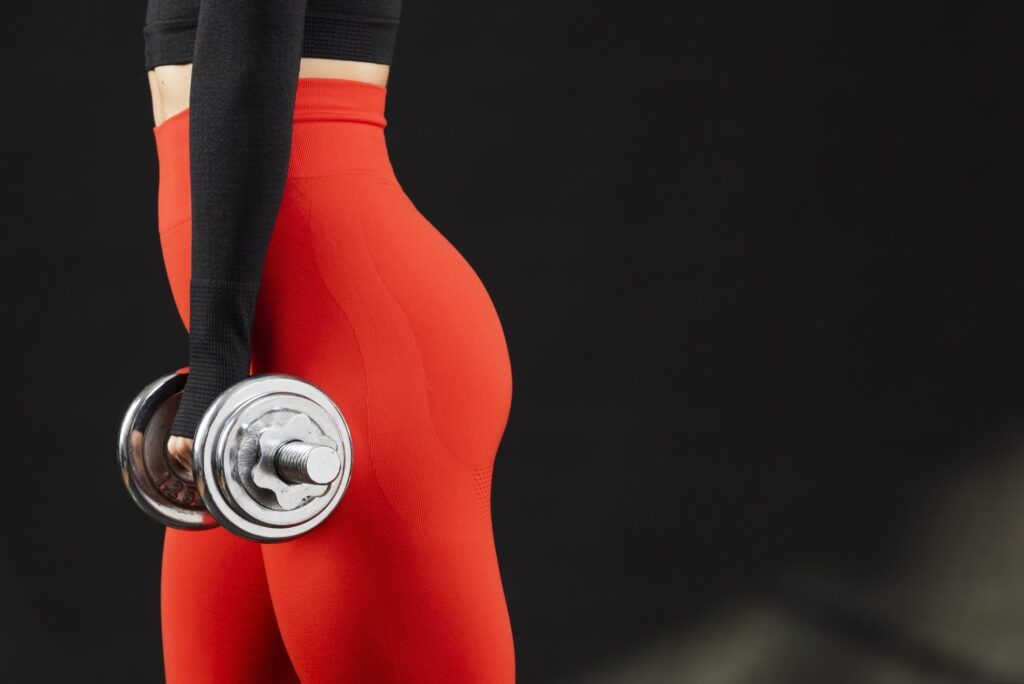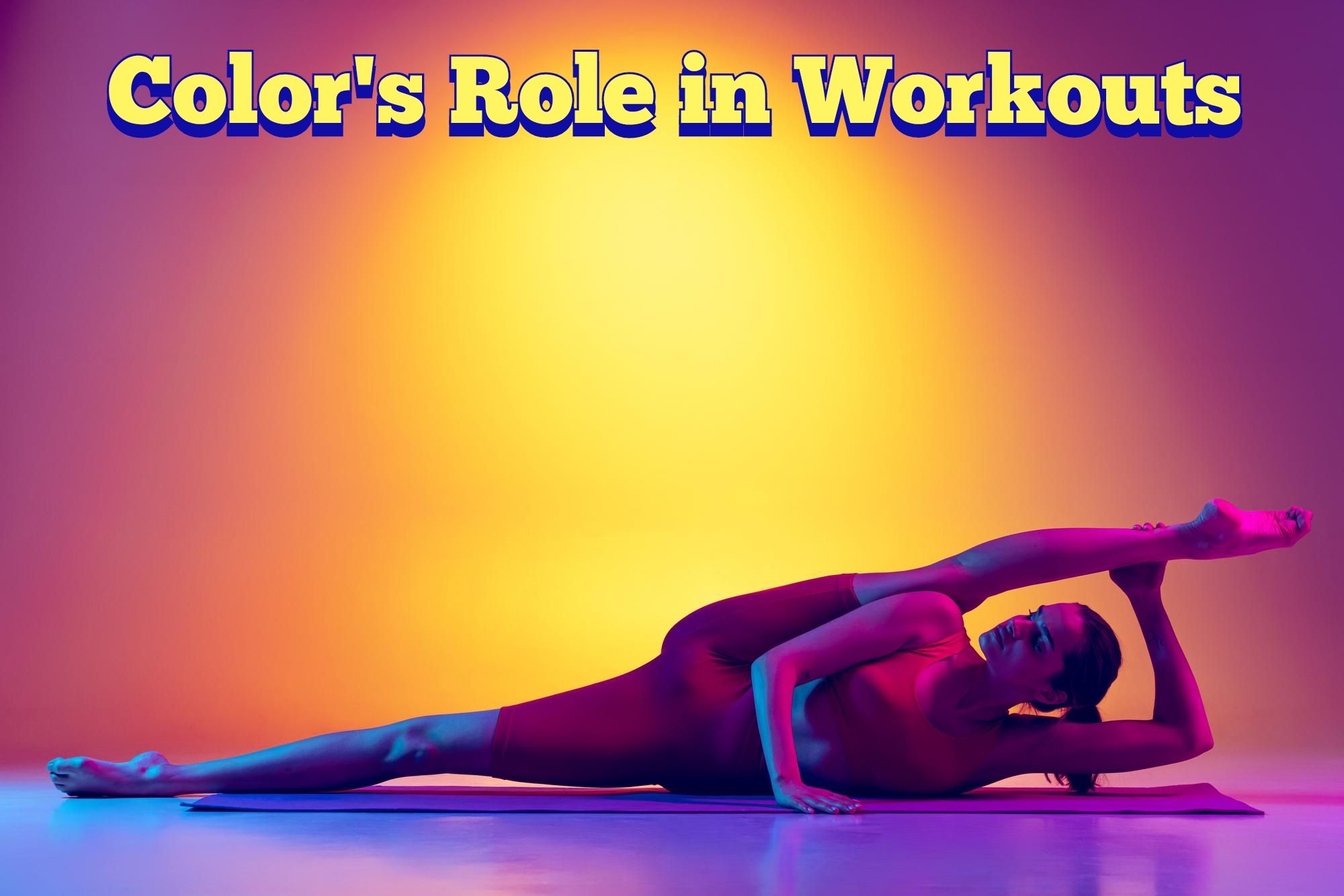The vast palette of colors that often adorn the walls of gyms, the fabric of our sportswear, and even the hue of our running shoes is not merely a design choice.
Each shade, tint, and tone can play a pivotal role in shaping our mindset, energy, and performance.
Ever wondered why some days you feel exceptionally driven wearing that bright red tank top, while on others, a muted blue t-shirt provides a sense of calm during your yoga session?
It’s not random.
Welcome to the intricate interplay between color and mindset!
The Interplay Between Color and Mindset
From the ruby shade of an apple to the cerulean vastness of the sky, colors influence our emotions, decisions, and actions more than we often acknowledge.
In fitness and sports, where even the slightest edge can tip the scales, the apt selection of color might just be the unsung hero.
Colors can evoke a multitude of emotions – from excitement and passion to tranquility and focus.
For example, while a fiery red might instigate aggression and zeal, essential for powerlifting or high-intensity workouts, softer hues like lavender might align more with relaxation and meditation routines.
The Science of Color Perception
At its core, color perception is a fascinating dance between light, the object, and our eyes.
When light hits an object, it absorbs some wavelengths and reflects others. It’s these reflected wavelengths that our eyes perceive as ‘color.’
The retina then sends these signals to the brain, where they’re processed and associated with learned emotions, memories, and experiences.
But the science doesn’t end there.
There have been numerous studies on how certain colors can influence our heart rate, stress levels, and even muscle tension.
For instance, while warmer colors are said to incite energetic and vibrant reactions, cooler colors often invoke a feeling of calm and serenity.
This isn’t just theory.
Sportswear brands, fitness centers, and even trainers factor in these subtleties when choosing gear, designing spaces, or setting a mood for a class.
Specific Colors and Their Effects

Red:
More than just a hue, red is an emotion, a force. It invokes feelings of power and dominance.
When worn or seen during workouts, it can elicit a surge of aggression, pushing one to surpass their limits.
Its vibrant nature embodies energy, making it a go-to for activities that demand vigor and zeal.

Blue:
Dive into the deep blue, and you’ll find tranquility. Blue is the color of the mind. It’s soothing and promotes concentration.
During exercise, a blue environment or attire can bolster focus, ensuring each movement is deliberate and effective.
Moreover, its calming nature provides stability, ideal for exercises that demand precision.

Green:
Nature’s favorite shade, green, brings with it a sense of equilibrium.
When it comes to physical well-being, it represents balance—a steady state of mind and body.
Its harmonious vibe can be grounding, allowing one to sync their movements seamlessly.
Moreover, green is often associated with endurance, making it apt for long, grueling sessions.

Yellow:
The color of sunshine, yellow is the epitome of positivity.
Its radiant energy is infectious, bringing a sense of cheerfulness to the dreariest workouts.
When motivation seems fleeting, a dash of yellow can reignite the drive, ensuring the process is as joyous as the destination.
Yellow exudes optimism, clarity, and warmth.
It’s ideal for morning workouts or when you need an extra dose of cheerfulness and motivation.

Black:
The timeless allure of black speaks volumes without uttering a word.
It exudes elegance, giving the wearer a sense of sophistication even in athletic settings.
But beyond aesthetics, black symbolizes strength and authority.
Donning black can imbue a sense of empowerment, making one feel invincible during their regime.

Purple:
Often linked with royalty, brings a touch of elegance to workouts.
Its deep tones can boost motivation, especially in activities like dance that merge movement with expression.
Wearing purple or incorporating it into workout spaces can uplift mood, blending calmness with energy for a productive session.
|
It’s no coincidence that workout spaces, yoga studios, or even home workout corners frequently play with these colors. They’re not just setting a theme; they’re curating an emotional environment conducive to specific workouts. |
How Brands Use Color Psychology in Sportswear
Brands, being the astute observers they are, have long recognized the profound impact of color psychology.
Look into any leading sportswear brand, and you’ll notice a pattern.
The high-intensity workout gear is often in shades of reds, blacks, or bright yellows.
On the other hand, gear designed for relaxation, stretching, or meditative exercises often veers towards blues, purples, and softer pastels.
Lululemon, for instance, offers yoga wear in calming shades, promoting a sense of peace and serenity.
In contrast, brands like Nike and Adidas often use bold colors for their running and training collections, aiming to invigorate and energize the wearer.
Moreover, brands also recognize the role of seasonal trends in color choices.
While the foundational psychology remains, the shades might vary based on what’s ‘in’ for the season.
How Bright Colors Can Boost Energy Levels
Step into a morning Zumba class, and you’ll be greeted with a burst of bright attire — neon pinks, electric blues, and sunny yellows.
There’s a science behind this vivid choice.
Bright colors are not just visually arresting; they can stimulate the mind, awaken the senses, and trigger an uptick in energy levels.
Research suggests that viewing vibrant shades can lead to a surge in adrenaline, making us feel more alert and ready for action.
This heightened state is precisely why many opt for luminous shades for high-intensity workouts, races, or competitions.
They act as external stimulants, augmenting the internal drive and pushing one to break their boundaries.
The Calming Effect of Neutral Tones
On the flip side of the spectrum, neutral tones – think beiges, grays, and muted blues – act as anchors.
These shades exude tranquility, grounding the individual and fostering an environment of mindfulness.
It’s no coincidence that Tai Chi practitioners, yoga enthusiasts, and meditation aficionados often gravitate towards these colors.
Neutral colors can decrease the heart rate, reduce muscle tension, and promote deeper breathing, making them ideal for exercises that emphasize balance, flexibility, and mental clarity.
By donning these shades, one is subconsciously setting the stage for a centered and calming workout, allowing the mind and body to move in harmonious synchrony.
Choosing Colors Based on Personal Goals
- Weight Loss: Bright shades like yellows or pinks can be motivating, keeping you cheerful and optimistic about your journey.
- Muscle Building: Earthy tones, such as browns or olives, can be grounding, emphasizing stability and growth.
- Flexibility Goals: Soft pastels, such as lilac or pale blue, can evoke feelings of fluidity and ease.
The Role of Trend vs. Function in Color Choices
While it’s tempting to be swayed by the latest color trends in athleisure, it’s vital to prioritize function.
Ask yourself: Does this color resonate with my workout goals? Does it put me in the right mindset?
That being said, there’s no harm in blending trend with function.
If a trendy color aligns with your workout mood and makes you feel confident, by all means, embrace it!
After all, when you look good, you feel good, and that positivity can cascade into your performance.
REFERENCES
Elliot, A. J., & Maier, M. A. (2007). Color and psychological functioning. Current Directions in Psychological Science, 16(5), 250-254.
- This study delves into how color can influence psychological states and behavior. It would provide valuable insights into the interplay between color and mindset, especially in the realm of athletics and performance.
Mahnke, F. H. (1996). Color, environment, and human response. John Wiley & Sons.
-
- This book offers a comprehensive look at the psychological, physiological, and design implications of color. It discusses how different environments, including those in athletic settings, can be influenced by color choice. The book would be particularly relevant for the sections discussing the emotional impact of colors and their effects on performance.
- Another interesting study on the influence of colors examines the association between the color red and performance success in the context of English football. It offers a sport-specific example of how color choice (in uniforms, in this case) might impact team performance, potentially due to perceived aggression or dominance associated with the color red.
Conclusion
Finding your way to a healthier lifestyle depends on your diet, choosing the right exercises, and perfecting your ideal routine.
However, it’s also about understanding the nuances that can enhance your experience, and color is one of those nuances.
Its influence is subtle, often operating in the background, but its effects are undeniably powerful.
Frequently Asked Questions
Does the Material Affect How the Color is Perceived?
Absolutely! The texture and sheen of the material can influence how a color looks. For instance, a bright red on a matte cotton fabric might appear more subdued than the same red on a glossy synthetic material. Lighter materials like mesh can also cause colors to appear somewhat faded, especially when stretched. Always consider the fabric type when choosing a specific color for your workout gear.
How to Care for Brightly Colored Sportswear?
Bright colors can fade over time, especially with frequent washing. To maintain the vibrancy:
- Wash in Cold Water: This helps in retaining the color intensity.
- Turn Inside Out: This prevents direct abrasion with other clothes.
- Avoid Bleach: Bleach can be harsh on colors and might cause them to fade faster.
- Air Dry: Whenever possible, air dry your sportswear. The heat from dryers can be tough on colors and the fabric itself.
Can I Mix and Match Colors in My Workout Outfit?
Of course! Mixing and matching colors can be both fun and empowering. Here are some guidelines:
- Balance is Key: If you’re wearing a bright top, you might want to go neutral with your bottoms, and vice versa.
- Complementary Colors: These are colors opposite each other on the color wheel, like blue and orange or red and green. They can create a dynamic contrast.
- Monochromatic Tones: Wearing different shades of the same color can create a cohesive and stylish look.
- Listen to Your Mood: Sometimes, it’s all about how you feel. If mixing bright yellow leggings with a hot pink top feels right, go for it!

